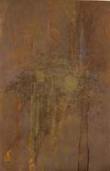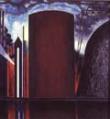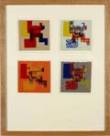reforming formal elements

Untitled
Carl Kahler
Click on image to enlarge with caption.
How did painters respond to the challenges of abstraction? The forward-looking artists of the early twentieth century viewed themselves as distinctly apart from those of the nineteenth century. They were advocates of technology and the machine and encountered flight, motorcars, and moving pictures — experiences their forebears could only dream about.
They found unexpected inspiration in the cultural plunder — the rich trove of objects from Africa and elsewhere, amassed over four centuries of colonial exploitation by the European powers — and adapted or rejected what they wished as they created a new vision of what art could be.
They proceeded to “take painting apart,” dissecting the role of color, line, and form in the articulation of meaning; they acknowledged their highly personal responses to the world around them with expressive imagery and they embarked on an odyssey searching for the “essential truth” of objects, experiences, and relationships.
In the process, these artists discovered that, as in academic painting, successful, meaningful abstract painting must incorporate a mastery of all of the elements of art. Additionally, those that chose to paint images of “that which is essentially non-visible” faced the challenge of developing legitimate strategies and techniques for realizing images that had no basis in the real world . . . after all, how do you paint what a musical solo looks like?
The images below associated with reforming formal elements have been selected to introduce you to new ways of thinking about some of the elements of art as they pertain to abstraction. You can apply some of the observations made here to the remaining works in this presentation.
Click on the thumbnail images below for a large version with detailed caption.

Line - Meaning

Color

Texture

Line - Movement

Scale

Shape

Line - Descriptive